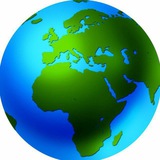tg-me.com/mapping_upsc_prelims/45
Last Update:
▪️Water Pollution:
✅Pesticides Use: The twin issues of pesticide use in the soil and industrial wastes penetrating into the soil are making groundwater toxic or at any rate, unfit for drinking.
✅Polluted Rivers: Most of the major and minor rivers in India are being turned into drains with industrial and household pollution. The Central Pollution Control Board (CPCB) in 2018 identified 351 polluted river stretches in India. Maharashtra has the highest number of polluted rivers stretches. The data obtained from CPCB stations show that organic and bacterial contamination continues to be the main source of pollution in rivers.
The Yamuna River is the most polluted river in the country between Delhi and Etawah. Other severely polluted rivers are: the Sabarmati at Ahmedabad, the Gomti at Lucknow, the Kali, the Adyar, the Cooum (entire stretches), the Vaigai at Madurai and the Musi of Hyderabad and the Ganga at Kanpur and Varanasi. Groundwater pollution has occurred due to high concentrations of heavy/toxic metals, fluoride and nitrates at different parts of the country.
▪️Agriculture sector specific issues:
✅ Excessive Consumption: It consumes the largest amount (over 85 percent) of India’s water.
✅Skewed incentive policy: Free or highly subsidized power, has led to excessive and irrational consumption of groundwater. It resulted in lowered water table and salinization of soil.
✅Low irrigated area: More than 60 percent of agricultural land in India is not irrigated, so the failed rains are particularly devastating for farmers. The drought has destroyed crops and dried up wells already stressed by overuse, forcing rural families to move to cities.
✅Poor Maintenance: There’s a growing gap between irrigation potential created and that actually utilised, simply due to improper maintenance.
✅ Unscientific Cropping Pattern: Punjab, Haryana, and West-Uttar Pradesh are the worst-affected Indo-Gangetic states in terms of water stress, and the main reason for this is their 40-year-old cropping pattern in which paddy, sugarcane, and wheat dominate -- all water-guzzlers.
#mains
Source - OnlyIAS
BY Mapping
Warning: Undefined variable $i in /var/www/tg-me/post.php on line 283
Share with your friend now:
tg-me.com/mapping_upsc_prelims/45
